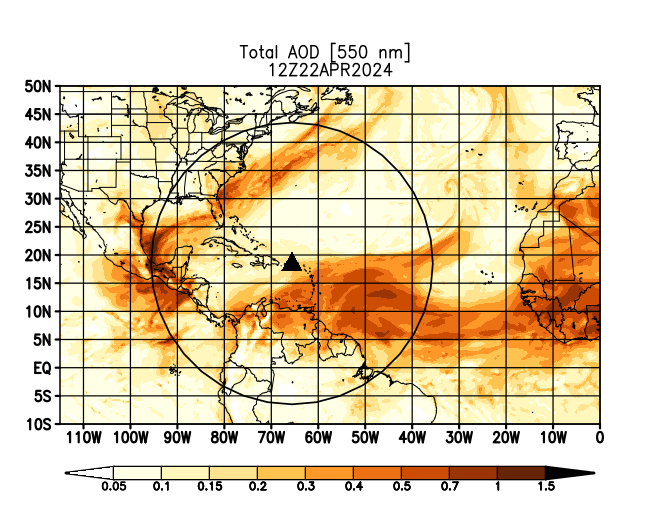Search:
Flight Projects | Sciences and Exploration
Atmospheric Chemistry and Dynamics Laboratory (Code 614)
For Our Colleagues Scientific/Technical Information
GEOS-5 Chemical and Aerosol Constituent Forecasts
Today's Aerosols  Latest 5-day Aerosol Forecast in Google Earth
Latest 5-day Aerosol Forecast in Google Earth |
Today's CO  Latest 5-day CO 150 hPa Forecast in Google Earth
Latest 5-day CO 150 hPa Forecast in Google Earth Latest 5-day CO 300 hPa Forecast in Google Earth
Latest 5-day CO 300 hPa Forecast in Google Earth |
|
Welcome to the homepage for NASA GSFC Code 614 and GMAO chemical constituent forecasts. Results are shown for forecasts run with the GEOS-5 model. Assimilation of aerosol optical thickness based on MODIS is included. Please note that these forecasts are considered "experimental" and so should not be published. Please contact the web curator with any questions. Useful LinksGEOS-5 System Configuration (based on GloPac configuration)NASA GSFC Code 614/Atmospheric Chemistry and Dynamics NASA GSFC Code 610.1/Global Modeling and Assimilation Office NASA HS3 Mission Page |
Page Sections
Today's Aerosols and COAnimations of Constituent Fields
Static Plots of Constituent Fields
Notes and Descriptions Explaining the Model
Animations of Constituent Fields
Click a link below for animations
Aerosol AOD (5-day forecast)
SO2 (5-day forecast)
CO (5-day forecast)
Notes:
Model runs are generated with the NASA GEOS-5 General Circulation Model with its meteorological data assimilation system. On this page we present results for aerosols, CO (carbon monoxide), and CO2 (carbon dioxide). The aerosol package is based on GOCART [Chin et al., JGR, 2002; Colarco et al., JGR, 2010] and contains dust, seasalt, sulfate, black carbon, and organic carbon aerosols. Biomass burning sources of carbonaceous aerosols, CO, CO2, and SO2 are determined in near real-time (and propagated forward in time for forecasts) from MODIS imagery and land mapping. Peter Colarco and Arlindo da Silva are responsible for the aerosol component. Randy Kawa and Huisheng Bian are responsible for the CO and CO2 components. Arlindo da Silva is responsible for the biomass burning sources. Peter Colarco is responsible for the web page.- NASA Official: Jose M. Rodriguez, Lab Chief
- Web Content: Peter R. Colarco (GSFC-6140)
- Last Updated: 2012-03-09


